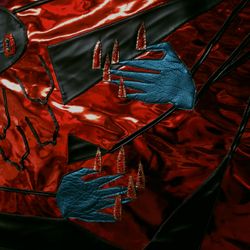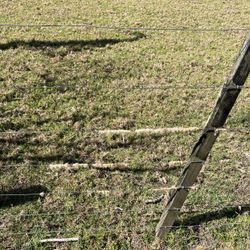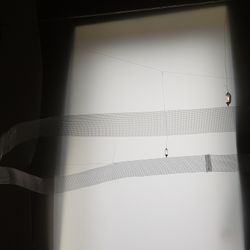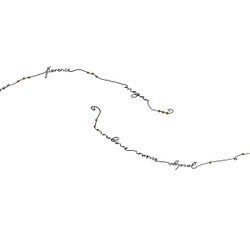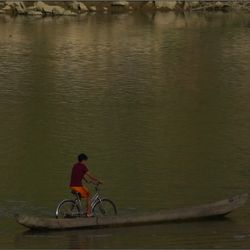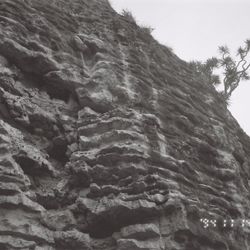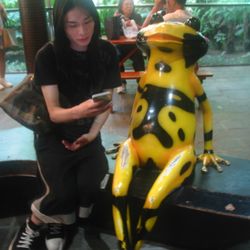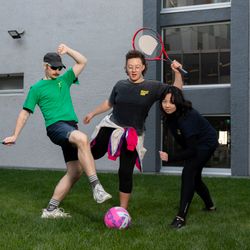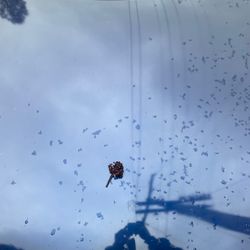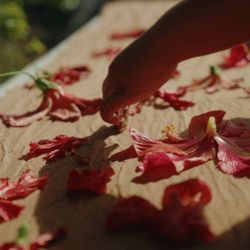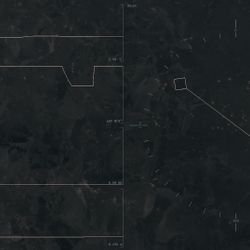Curated by Ali Bramwell, Unstable Institutional Memory: 10 Years at the Blue Oyster uses as a starting point a group of iconic works produced by Hannah Beehre, Steve Carr, Richard Crow & Michael Morley, Julian Dashper, anonymous and Margaret Roberts for the Blue Oyster over the course of its history.
Past Exhibition
Tūrei 8 Hepetema -
Hātarei 3 Oketopa
Tuesday 8 September -
Saturday 3 October
2009
Curated by Ali Bramwell, Unstable Institutional Memory: 10 Years at the Blue Oyster uses as a starting point a group of iconic works produced by Hannah Beehre, Steve Carr, Richard Crow & Michael Morley, Julian Dashper, anonymous and Margaret Roberts for the Blue Oyster over the course of its history. Instead of attempting a faithful restaging, Bramwell has asked the artists responsible to reprise their original works in some negotiated way, in full knowledge that a return to the same starting point is impossible in every case.
The exhibition compels the artists involved to consider the sensation of incomplete memory and the distance between now and the moment that specific work was first made. Posing a challenge to try and re-inhabit thoughts and objects through the distance imposed by time, this process suggests a way of understanding more clearly what has changed and what has remains the same. The works selected and solicited are in many ways inadequate place holders for a recovered or reconstituted history, sitting in the space between memory and actuality, the past and the resent, and at odds with aspirations for completeness and coherency.
The publication Old, New, Borrowed, Blue: 10 Years at the Blue Oyster dabbles with this problem of memory and remembering and the role that storytelling/myth making has in how we filter and value those memories. Here the collection of events and personalities that constitute the history of the Blue Oyster have been sifted through a selection of personal accounts and collective narratives, then strained through the gaps in archival records. Wry examinations of the evolution of the space from artist run and grass-roots to something more professional and reliable, intermingle with divergent recollections and ideals for the future. The publication provides accounts of significant defining moments and events in the lifespan of the project space and more sweeping historical perspectives, both attempting to define, but never quite isolating, the zest of the Blue Oyster.
Blue Oyster Discussion Session 4: Wednesday 23 September, 5:30pm
For our fourth discussion we are going to tackle the many questions and implications behind how artists are selected for inclusion in exhibitions and other programmes.
Specifically, we want to address issues around trying to provide access and representation versus an intention to stimulate discussion and innovation and to what extent these things are mutually exclusive. This paradox is not unique to the Blue Oyster, but it is one that has been grappled with constantly over the ten years of our existence, as Ali Bramwell articulates in the publication produced for the Blue Oyster's tenth anniversary:
"One of the most pressing philosophical arguments to occur in this institution over the years concerns how artists’ works are selected or rejected for exhibition. This issue has a social dimension and repercussion; a cooperative model is not easily compatible with a system that also seeks conceptual rigor and strives to promote quality standard. Some kind of balance is required." - Ali Bramwell (full text available for download here)
Joining us to share their experiences and approaches:
Jodie Dalgleish, Independent Curator
Paul Smith, Director of the Dunedin Fringe Festival
Ali Bramwell, Curator and Lecturer at the Dunedin School of Art


